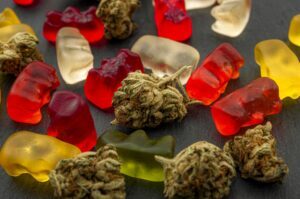Cannabis use in the medical and wellness industries is constantly growing. Along with its popularity is the development of various products, like edibles, with different potency levels to accommodate specific needs.
Cannabis edibles have gained popularity for their discreet and diverse forms, providing a smoke-free option for consumption. However, understanding and gauging their potency can be tricky, especially for first-time users.
Understanding the dosages and potencies of cannabis edibles is crucial to maximizing their health and wellness benefits. That said, here’s a quick guide for safe and healthy consumption.
Cannabis Edibles Basics
Cannabis edibles are food products infused with cannabinoids – compounds derived from cannabis. Some evidence suggests that its usage dates back thousands of years. However, its legalization for medical and recreational use has recently sparked progressive use.
Experts from trusted cannabis dispensaries can provide a complete Edibles Guide. Meanwhile, here’s a more comprehensive list of the most common types of cannabis edibles, each offering unique experiences:
- Baked Goods: Baked goods like brownies, cookies, and muffins are often the go-to choice for many consumers. They are typically infused with cannabis butter or oil and offer a tasty way to ingest cannabis.
- Gummies and Candies: These are popular for their convenience and variety of flavors. From gummy bears to lollipops, these sweet treats are infused with a specific amount of cannabinoids, making dosage control straightforward.
- Chocolates: Cannabis-infused chocolates are another fan favorite. They combine the delightful experience of eating chocolate with the effects of cannabis. They’re available in various potency levels to cater to both novice and experienced users.
- Beverages: From cannabis-infused teas and coffees to sodas and elixirs, these drinks offer a different way to consume cannabis. They are typically slower to take effect but provide a unique and often refreshing experience.
- Savory Snacks: Cannabis-infused savory snacks like popcorn, chips, or cheese bites offer an alternative for those who prefer something less sugary.
The diverse options in cannabis edibles are the results of years of innovation by cannabis experts. Founder, Alexander Farnsworth of a fine cannabis company, along with other innovators in the cannabis industry, paved the way for developing various cannabis products to suit everyone’s palate.
Due to a wide range of product diversity, emphasizing the importance of understanding potency is crucial. Different products can have vastly different concentrations of THC and CBD, making education and responsible consumption paramount.
Understanding Cannabis Potency
Potency in cannabis edibles refers to the concentration of cannabinoids, primarily THC (Tetrahydrocannabinol) and CBD (Cannabidiol), typically measured in milligrams (mg) per serving. THC produces psychoactive effects, while CBD is non-intoxicating. Both are recognized for their potential therapeutic benefits.
However, the potency of cannabis edibles isn’t solely determined by their THC or CBD content. Several factors influence how potent an edible might seem:
- Cannabis Strain: Cannabis strains have varying levels of cannabinoids. Some strains are high in THC and low in CBD, while others might have a more balanced or reversed ratio. The strain used in producing the edible will significantly affect its overall potency.
- Extraction Method: The method of cannabinoid extraction can also influence potency. Some processes are more efficient, resulting in higher cannabinoid concentrations. For example, CO2 extraction is often hailed as the most effective method, preserving and isolating the cannabinoids better than other techniques.
- Decarboxylation: This process involves applying heat to raw cannabis to activate the cannabinoids, a crucial step in making edibles. The duration and temperature of decarboxylation can affect how much THC and CBD are activated, thus impacting the potency.
- Preparation Process: How cannabis is incorporated into the edible can influence potency. For example, if cannabis butter is used, the concentration could vary based on how well the cannabis was infused into the butter.
- Storage Conditions: Just like many other food products, the potency of cannabis edibles can be affected by how they are stored. Prolonged exposure to light, air, and high temperatures can degrade cannabinoids over time, reducing the product’s potency.
Understanding these factors helps elucidate why different edibles can have varying effects despite having similar THC or CBD concentrations. This emphasizes the importance of responsible consumption and the need to consider factors beyond just the numbers on a product’s label.
Impact Of Potency Levels On The Body
The potency of cannabis edible determines the intensity of the experience by influencing various physical and psychological effects. Here’s a closer look at how cannabis potency impacts the body:
- Psychoactive Effects: High-potency edibles containing large amounts of THC can produce pronounced psychoactive effects. These can include euphoria, altered perception, and, in some cases, anxiety or paranoia. On the other hand, low-potency or CBD-dominant edibles may have milder or no psychoactive effects.
- Physical Effects: Depending on the potency, cannabis edibles can also cause several physical effects. These might include dry mouth, red eyes, increased heart rate, coordination problems, and, in the case of high doses, even dizziness or fainting.
- Therapeutic Effects: Many people use cannabis for its potential therapeutic effects. High-CBD edibles can help relieve pain, inflammation, and anxiety without producing a ‘high.’ Meanwhile, high-THC edibles might be used for conditions like insomnia or loss of appetite.
- Duration of Effects: The potency of an edible can also influence how long its effects last. Generally, the higher the THC concentration, the longer you can expect the effects to last. However, factors such as metabolism, tolerance, and food intake can also play a role.
- Onset of Effects: Interestingly, the potency can impact how quickly you feel the effects. While most edibles take 30 minutes to one hour to take effect, a very high-potency edible may produce noticeable effects more quickly.
Understanding how different potencies can impact the body is crucial in choosing the right edible dosage for your individual needs and tolerance.
Dosage Recommendations
For beginners, experts usually recommend starting with a lower dose, typically between 1-5mg of THC. More experienced or frequent consumers may opt for higher dosages, but caution is still advised. If you’re taking edibles for medical use, follow your prescription to maximize its effects and minimize risks.
Aside from safety considerations, consuming safe dosage is crucial for a pleasant cannabis experience. Starting low is best, especially for first-timers. Low and slow consumption helps maximize benefits while minimizing adverse effects.
The Role Of Regulation In Ensuring Safe Consumption
Regulation plays an important role in the safe consumption of cannabis edibles. In many regions where cannabis is legal, regulatory bodies oversee the production and labeling of these products. They set limits for THC concentration and help ensure that consumers know the potency of the products they purchase.
Conclusion
Understanding the potency of cannabis edibles is pivotal for safe and enjoyable consumption. Buying from licensed cannabis dispensaries can help ensure that the edibles’ potency is accurate, reducing the risk of overconsumption. Reaching out to a health professional is also advised for a safer cannabis experience.
Author’s Bio:
Jake Sullivan is a cannabis enthusiast and an expert in understanding the potency in cannabis edibles. With a background in cannabis research and education.







































Leave a Reply Cancel reply